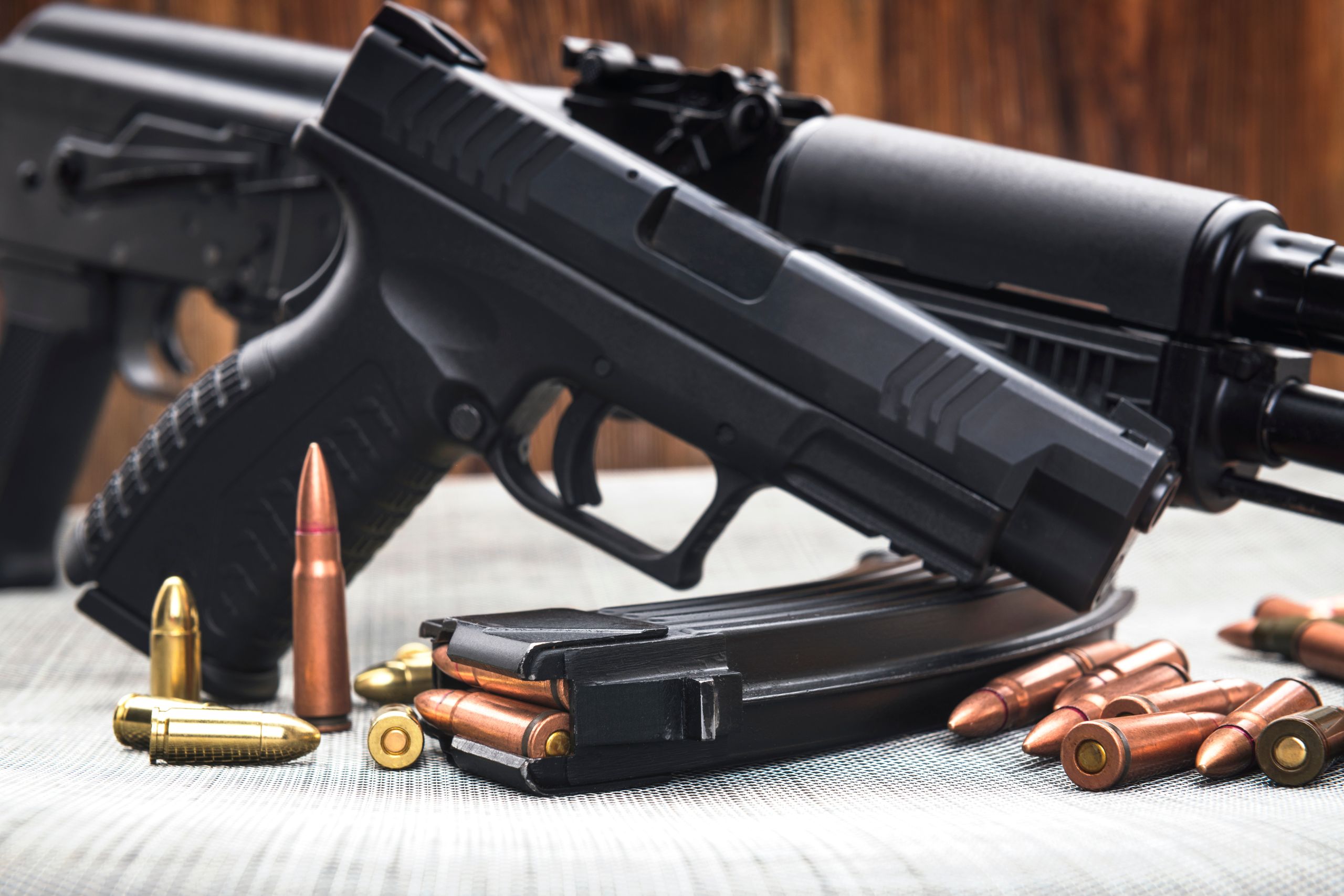Best Way to Avoid Rusted Guns? Proactive Storage With VCI Firearm Bags

Best Way to Avoid Rusted Guns? Proactive Storage With VCI Firearm Bags
As the old saying goes, if guns have two enemies, one is politicians and the other is rust. We’ll leave it to voters to sort the former, but with respect to the latter: The best way to avoid issues with rusted guns is to be proactive about how they’re stored.
It’s true that thorough cleaning and oiling is important. But a solid storage solution – one that not only prevents accumulation of dust and debris, but moisture and humidity as well – is an imperative to prevent corrosion.
At Zerust, we recommend:
- Careful cleaning.
- Proper gun oiling.
- Moisture-resistant, temperature-controlled gun safe.
- Placing each gun in a VCI firearm protection bag. (VCI stands for vapor corrosion inhibiting.)
VCI firearm bags can be used after each use or for long-term storage, providing up to 5 years of protection from rust and corrosion. So even if you don’t have the funds to spring on a top-of-the-line gun safe storage solution, you can still keep your firearms rust-free. 
Types of Corrosion to Which Firearms Are Susceptible
Firearm forums are full of gun owners lamenting “rusted guns,” but often overlook the fact that there are actually several different types of corrosion – not just rust – that they need to be concerned with when exploring storage solutions. Firearms are actually susceptible to many types of corrosion, most caused by exposure to environmental factors, improper maintenance, and the presence of different metals.
Types of corrosion that most commonly cause adverse impact firearms include:
- Rust. Also sometimes referred to as, “uniform corrosion” or more scientifically, “iron oxide.” As noted in the journal Corrosion Science, all that’s needed for the corrosion known as rust to take hold is : Iron/iron alloy metals + air + water. (The “water” in this case usually comes in the form of humidity in the air.) A rusted gun will develop a reddish-brownish compound that ultimately deteriorates the metal surface. Any gun made of carbon steel or that contains iron-based components are particularly prone to rust if they aren’t properly cleaned, dried, and protected.
- Pitting Corrosion. Pitting corrosion is a localized form of corrosion that leads to the formation of small pits or craters on the metal surface. It often occurs in areas where moisture or contaminants have accumulated and can be particularly problematic for firearm barrels and surfaces.
- Galvanic Corrosion. This is something gun owners who store several different firearms in the same enclosed space need to be especially mindful. Galvanic corrosion involves the presence of dissimilar metals in close proximity with each other AND an electrolyte compound. The most common electrolyte trigger for dissimilar metals in guns is: Moisture (or humidity). This results in an electrochemical process that produces galvanic cells, leading to accelerated corrosion at the point(s) of contact.
- Crevice Corrosion. This creeps into the crevices and confined spaces where any moisture and/or contaminants get a chance to accumulate. Firearms have plenty of crevices – including junctions between parts or where metal-meets-polymer.
- Stress Cracking Corrosion. If your firearm is subject to harsh conditions (extreme temperature fluctuations, salt water, high winds, etc.), it can result in stress corrosion cracking. This is the result of the combined influence of a corrosive environment and tensile stress.
To protect firearms from corrosion, proper cleaning, maintenance, and storage are essential. 
Won’t Protective Coating Prevent Rusted Guns?
Gun manufacturers have come a long way with the protective coatings used to protect firearms from rust and corrosion. However, none are 100 percent effective if you don’t take good care of them.
In the old days, Parkerizing or bluing (controlled corrosion) were processes used to reduce the rampant risk of rusted guns. Today, most modern firearms are typically treated with some form of advanced, protective coating. The exact type of coating varies depending on the type of gun and the manufacturer. Some use a baked-on ceramic-based coating. Others use a chemical process that involves a salt bath nitriding.
These finishes can go a long way to preserving the metal components, but they aren’t the last word, especially if your gun:
- Gets a lot of use.
- Is used in a regional environment with high moisture/salty air.
- Spends a lot of time in a gun case or gun safe.
- Isn’t stored in a temperature-controlled gun safe.
But even if your gun has a top-quality coating and you take care to clean, lubricate, and dry it after each use, it’s still a good idea to put some extra thought into how you’re storing it. Most people are surprised to learn that rusted guns can occur just by letting a gun sit clean and oiled in the case or safe.
Taking the extra step of storing your firearm in a VCI firearm bag before putting it in the safe or case is what will ultimately ensure the highest level of gun rust and corrosion prevention. The vapor corrosion-inhibiting formula won’t leave any gummy residue on wood or metal parts, and won’t damage the stocks, optics, grips, ammunition – or any metal finish. There are a variety of sizes and closure options (zip or twist ties). And they’ll last up to 5 years if you decide to use them that long. If you use them more frequently, the corrosion prevention vapor simply dissipates harmlessly into the air, and you use another low-cost bag the next time you put the gun in storage.
Questions about Zerust gun cleaner, gun oil, or gun storage solutions for rust prevention? We can help! Contact Zerust at 1-866-2-ZERUST (937878).
Additional Resources:
Gun corrosion—its cause and prevention, July 1971, Corrosion Science
More Blog Entries:
Stop Gun Rust From Gaining Traction With VCI Vapor Capsules, May 25, 2023, Zerust Gun Rust Prevention Blog




